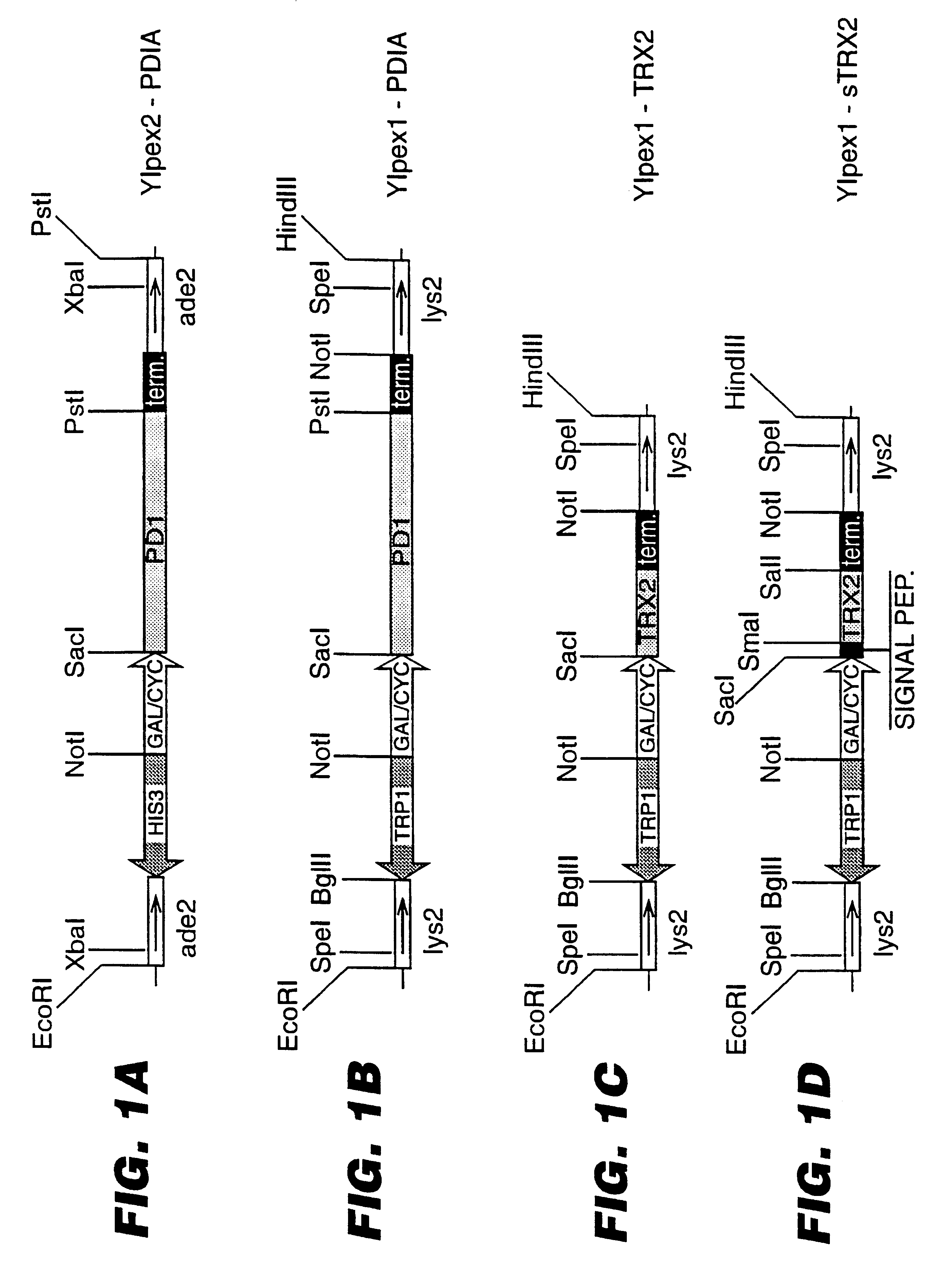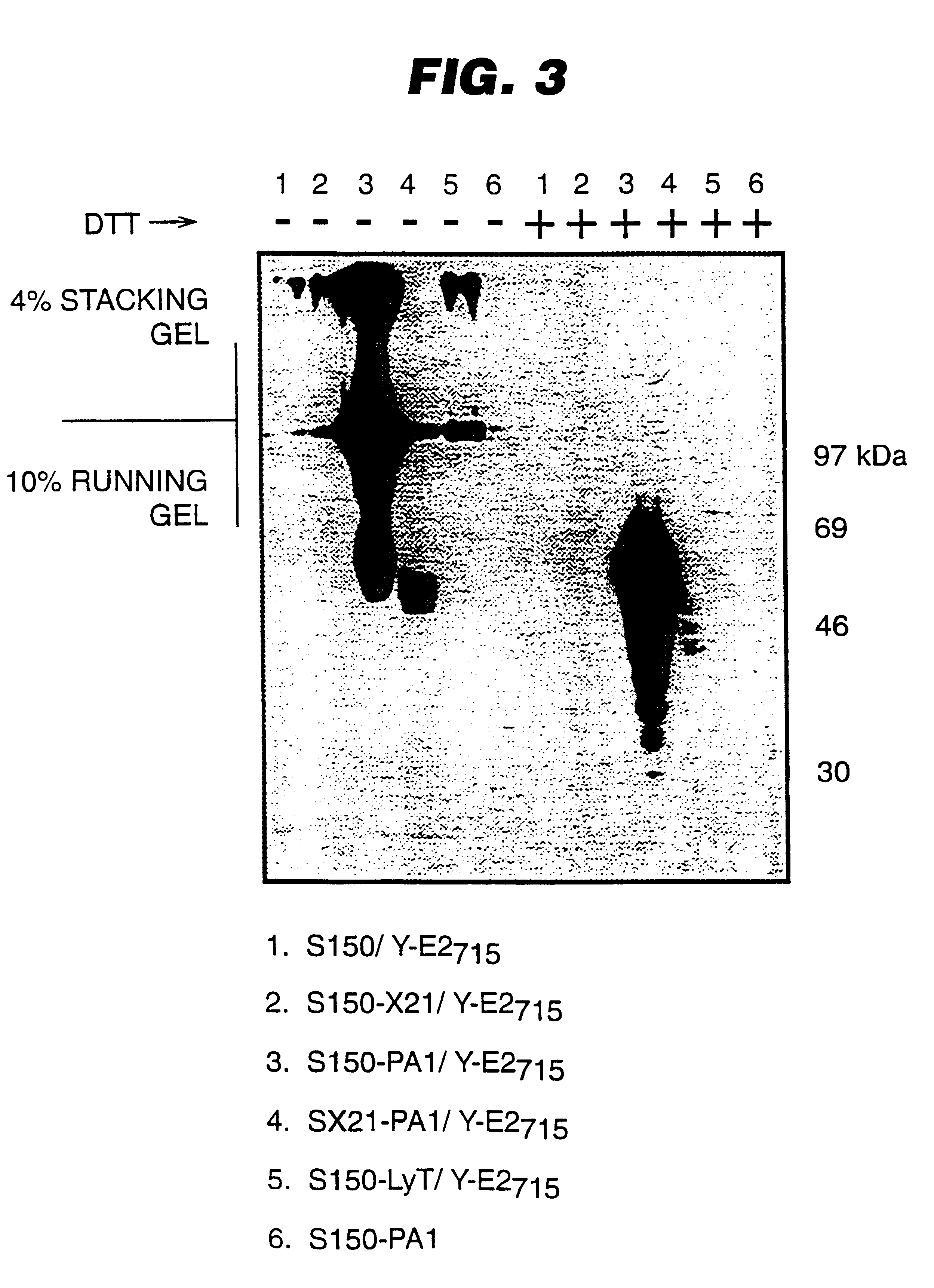Expression of heterologous proteins
- Summary
- Abstract
- Description
- Claims
- Application Information
AI Technical Summary
Problems solved by technology
Method used
Image
Examples
examples
Strains, Plasmids and Media
A description of the strains and plasmids used is presented in Table 1 and in FIGS. 1A-D. FIGS. 1A to 1D depict schematically the integrative cassettes used to modify the S. cerevisiae strains. The open boxes represent the S. cerevisiae chromosomal sequences ade2 (FIG. 1A) and lys2 (FIG. 1B-D) used for integration into the homologous chromosomal loci. The genetic markers used for selection of integrants (HIS3 and TRP1) are shown as hatched arrows, while the open arrow (GAL / CYC) indicates the promoter sequence. The black box (term) represents transcription termination sequences. The plasmid vector sequences are not shown.
The E. coli strain HB101 (F.sup.- hsdS20 recA13 ara-14 proA2 lacY1 galK2 rpsL20 xyl-5 metl-1 supE44) was used for plasmid constructions. Transformation of E. coli cells and analysis of recombinant plasmids were carried out as described by Sambrook et al., Molecular Cloning: A Laboratory Manual, 2nd Edition, Cold Spring Harbor Laboratory, Co...
PUM
 Login to View More
Login to View More Abstract
Description
Claims
Application Information
 Login to View More
Login to View More - R&D
- Intellectual Property
- Life Sciences
- Materials
- Tech Scout
- Unparalleled Data Quality
- Higher Quality Content
- 60% Fewer Hallucinations
Browse by: Latest US Patents, China's latest patents, Technical Efficacy Thesaurus, Application Domain, Technology Topic, Popular Technical Reports.
© 2025 PatSnap. All rights reserved.Legal|Privacy policy|Modern Slavery Act Transparency Statement|Sitemap|About US| Contact US: help@patsnap.com



